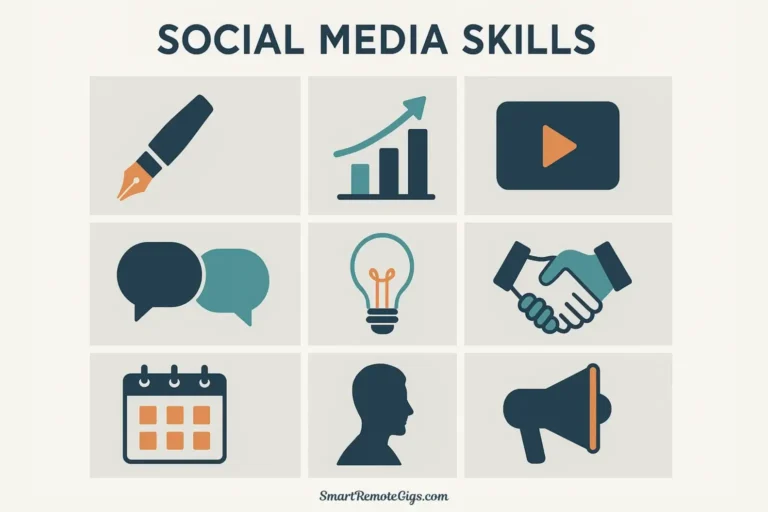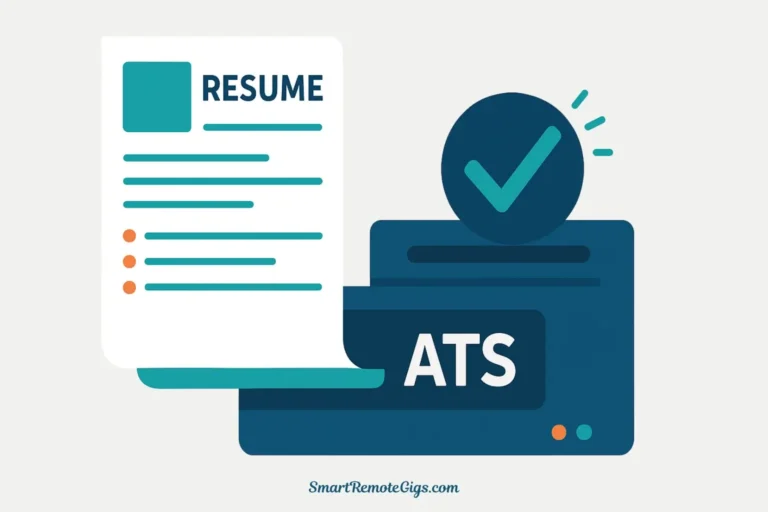Every aspiring social media manager faces the same frustrating catch-22: job postings ask for experience, but you need a job to gain experience. You scan through openings for your dream role, only to find they all request “a portfolio of previous work” or “proven track record of success.” How are you supposed to prove yourself when no one will give you that first opportunity?
Here’s the truth that hiring managers won’t always tell you: they don’t actually need to see client work—they need to see that you can do the work. A well-crafted social media manager portfolio built through strategic projects is often more impressive than mediocre work done for real clients. Why? Because portfolio projects allow you to demonstrate your best thinking without the constraints, compromises, or rushed timelines of actual client work.
This guide provides five specific, actionable projects you can complete this week to build a social media portfolio from scratch. No clients required, no special access needed—just your time, creativity, and strategic thinking. By the end, you’ll have a professional portfolio that proves to hiring managers you have the skills to succeed, even if you’ve never been paid for social media work before.
Let’s eliminate your “no experience” problem once and for all.
First, Choose Your “Client”: Pick a Brand You Love
Before diving into the projects, you need to select a brand to work with. This creates a cohesive case study throughout your portfolio rather than disconnected, random examples.
Your Options:
1. A Local Small Business
Coffee shop, boutique, yoga studio, bakery, or restaurant in your area. Local businesses often have social media presence but lack sophisticated strategy, giving you plenty of room to demonstrate improvements.
2. An App or Tech Product You Use
A productivity app, fitness tracker, meditation platform, or software tool you genuinely love. Tech companies are often hiring social media managers, so showing expertise in this space is valuable.
3. An Online Brand or Creator
A small e-commerce brand, independent artist, podcast, or content creator you follow. Choose someone with 1,000-10,000 followers—large enough to have some presence but small enough to have obvious growth opportunities.
4. Your Own Personal Brand
If you have a hobby, side project, or professional expertise you want to build around, use yourself as the case study. This has the added benefit of actually building your real presence.
Selection Criteria:
- Genuine Interest: Choose something you actually care about. Your enthusiasm will show in your work.
- Clear Target Audience: Pick a brand with an identifiable audience you understand.
- Active but Improvable: Look for brands currently posting but with obvious room for strategic enhancement.
- Multiple Platforms: Ideally, they’re on at least 2-3 social platforms, giving you more to analyze.
- Visual Content Potential: Ensure there’s good material to create engaging visual content around.
For this guide, let’s use a fictional example: “Brew & Pages,” a local independent coffee shop that also sells used books. They’re active on Instagram and Facebook but post inconsistently with no clear strategy. Their target audience is 25-45-year-old booklovers, remote workers, and community members looking for a cozy third space.
Choose your brand now—everything that follows will reference this consistent “client.”
Project 1: The 3-Post “Mini-Campaign”
What It Demonstrates: Content creation, copywriting, visual design, and campaign cohesion.

Time Required: 3-4 hours
This project showcases your ability to create engaging, strategic content—the core skill of any social media manager. You’ll develop three related posts that work together as a mini-campaign.
Step-by-Step Process:
1. Choose Your Campaign Theme
Pick a specific goal or event your chosen brand could promote:
- New product/menu item launch
- Behind-the-scenes series (meet the team, how products are made)
- Customer appreciation campaign
- Seasonal promotion (spring collection, summer menu)
- Educational series (tips, how-tos, industry insights)
- Community involvement (local partnership, charity initiative)
Example for Brew & Pages: A “Read & Recharge” campaign promoting their coffee + used books pairing, encouraging customers to spend Sunday mornings reading in their space.
2. Plan Your Content Mix
Ensure variety across your three posts:
- Post 1: Educational or value-driven (tips, how-to, insight)
- Post 2: Behind-the-scenes or story-driven (human element, authenticity)
- Post 3: Promotional or action-oriented (specific offer, clear CTA)
Example:
- Post 1: “5 Books Our Baristas Are Reading This Month” (value + recommendations)
- Post 2: “How We Choose Which Used Books Make It to Our Shelves” (behind-the-scenes)
- Post 3: “Read & Recharge Sundays: Free Coffee Refills When You Buy a Book” (promotional)
3. Create Your Visuals
Use Canva (free version works perfectly) to design graphics:
- Choose a consistent color palette (pull from brand colors if they exist, or create one)
- Use the same 2-3 fonts across all three posts
- Maintain visual cohesion (similar layouts, consistent style)
- Optimize for platform (1080×1080 for Instagram feed, 1200×630 for Facebook)
Pro Tips:
- Include your chosen brand’s logo or name on graphics
- Use high-quality stock photos from Unsplash or Pexels
- Add subtle texture or overlays to make posts feel professional
- Ensure text is large enough to read on mobile
4. Write Compelling Captions
For each post, write complete captions following this structure:
- Hook (first line): Grab attention immediately—this is what appears before “…more”
- Body (2-3 sentences): Provide value, tell a story, or explain the benefit
- Call-to-Action: What do you want people to do? (Comment, share, visit, tag someone)
- Hashtags: 5-10 relevant, strategic hashtags researched for the niche
Example Caption (Post 1):
“Our baristas read more than just coffee beans ☕📚
This month’s staff picks range from mystery thrillers to business biographies. Maria (pictured) swears ‘The Thursday Murder Club’ is the perfect Sunday morning read—best enjoyed with our new maple cinnamon latte.
What are you reading right now? Drop your current book in the comments—we’re always looking for our next staff pick!
BookLovers #CoffeeAndBooks #IndependentBookstore #ReadingCommunity #LocalCoffeeShop #SundayReading #BookRecommendations”
5. Document Your Strategy
Create a simple one-page document explaining:
- Campaign Goal: What you’re trying to achieve (awareness, engagement, foot traffic)
- Target Audience: Who these posts are for
- Content Strategy: Why you chose these three specific posts
- Success Metrics: How you’d measure if this campaign worked (saves, shares, comments, foot traffic)
Deliverable Format:
Present this as a 4-5 slide PDF or Canva presentation:
- Slide 1: Campaign overview (theme, goal, audience)
- Slides 2-4: Each post shown as it would appear on the platform, with full caption
- Slide 5: Strategy explanation and success metrics
Project 2: The Competitive Analysis
What It Demonstrates: Strategic thinking, analytical skills, market awareness, and research ability.

Time Required: 2-3 hours
Hiring managers want to know you can think strategically, not just create pretty posts. A competitive analysis proves you understand the broader landscape and can identify opportunities.
Step-by-Step Process:
1. Identify Two Direct Competitors
Choose two brands that compete with your chosen brand:
- Similar product/service
- Similar target audience
- Comparable size (don’t compare a local shop to Starbucks)
- Active on social media
Example for Brew & Pages: Two other local coffee shops or bookstores in nearby neighborhoods with similar vibes.
2. Analyze Their Social Media Presence
For each competitor, evaluate:
Platform Selection:
- Which platforms are they active on?
- Which seems to get the most engagement?
- Are they missing any obvious platforms for their audience?
Content Strategy:
- What types of content do they post most? (Product, behind-the-scenes, educational, promotional, user-generated)
- How frequently do they post?
- What’s their posting schedule/consistency?
Visual Branding:
- Is their visual style consistent?
- What colors, fonts, and aesthetics do they use?
- How professional/polished vs casual/authentic is their approach?
Engagement & Community:
- What’s their approximate engagement rate? (rough calculation: engagement ÷ followers)
- Do they respond to comments and messages?
- How do they interact with their community?
What’s Working Well:
- Identify 2-3 posts that performed notably well (high engagement)
- Why do you think these succeeded? (timing, topic, format, emotion)
Gaps & Opportunities:
- What are they NOT doing that they should be?
- Where could they improve?
- What opportunities are they missing?
3. Create Your Analysis Document
Build a simple 2-page report:
Page 1: Competitor Overview
Create a comparison table with key metrics:
| Metric | Competitor A | Competitor B | Your Brand Opportunity |
|---|---|---|---|
| Platforms Used | Instagram, Facebook | Instagram, TikTok | Add TikTok for younger audience |
| Post Frequency | 3-4x/week | Daily | Consistency is key – aim for 5x/week |
| Avg. Engagement Rate | 2.3% | 4.1% | Focus on community-building content |
| Content Types | 60% Product, 40% Promo | 50% Lifestyle, 30% BTS, 20% UGC | Balance: 40% Value, 30% Community, 30% Promo |
| Response Rate | Rarely responds | Quick responses | Make engagement a priority |
Page 2: Key Insights & Recommendations
Write 3-4 paragraphs summarizing:
- What competitors do well: “Both competitors excel at showcasing their ambiance through high-quality photography…”
- Where they fall short: “Neither competitor consistently responds to comments or builds community…”
- Opportunities for your brand: “There’s a clear gap in educational content—neither shares coffee brewing tips or book recommendations…”
- Strategic recommendations: “To differentiate, Brew & Pages should position itself as the ‘community hub for book lovers’ by creating content that sparks literary conversations…”
Deliverable Format:
A clean, professional 2-page PDF with:
- Clear headers and sections
- The comparison table
- 2-3 screenshot examples of competitor posts (labeled with what makes them effective or ineffective)
- Your strategic insights and recommendations
Why This Works: This project proves you can think beyond individual posts to understand market positioning and competitive advantage—skills that separate strategists from executors.
Project 3: The Content Calendar
What It Demonstrates: Organization, planning ability, strategic thinking, and understanding of consistent posting.
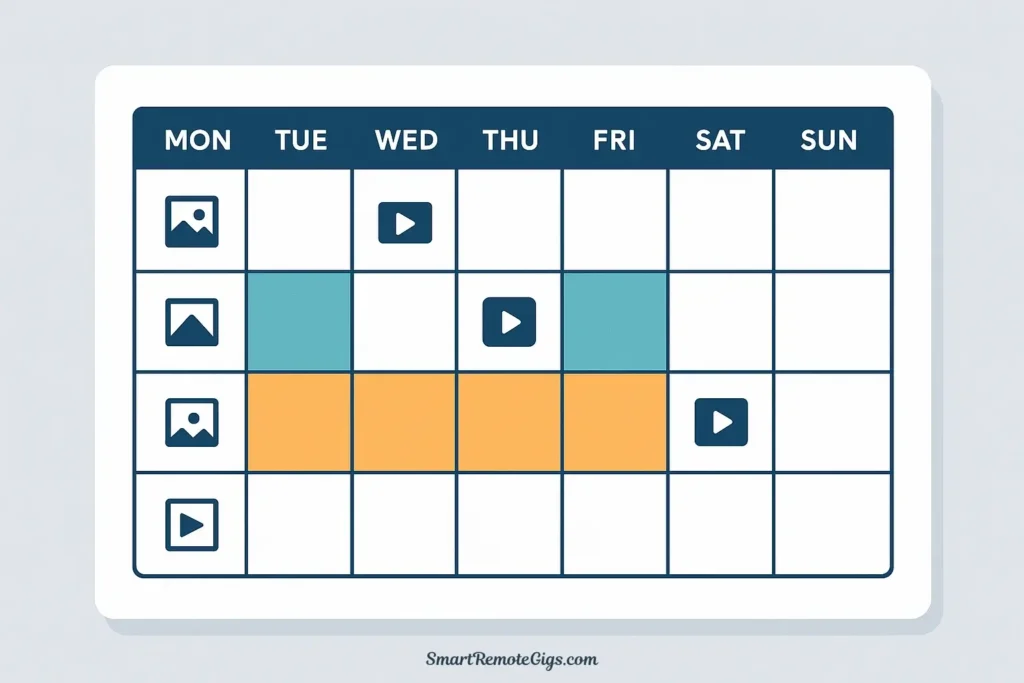
Time Required: 2-3 hours
A content calendar shows you can plan cohesively rather than posting randomly. This is one of the most valued skills for remote social media managers who work independently.
Step-by-Step Process:
1. Choose Your Time Frame
Create a one-week content calendar with posts planned for each day. This is substantial enough to show planning skills without being overwhelming.
2. Select Your Platform(s)
Focus on 1-2 platforms where your chosen brand is most active. For a beginner portfolio, you don’t need to plan for every platform—depth over breadth.
Example: Create a week of Instagram posts (feed + stories) and Facebook posts.
3. Determine Your Content Pillars
Effective social media follows themes or “content pillars”—categories that support the brand’s goals. Choose 3-4 pillars for your chosen brand.
Example for Brew & Pages:
- Pillar 1: Product Spotlight (coffee drinks, featured books)
- Pillar 2: Community & Customers (user-generated content, customer stories)
- Pillar 3: Education & Tips (brewing methods, book recommendations)
- Pillar 4: Behind-the-Scenes (staff features, daily operations)
4. Build Your Calendar
Create a spreadsheet (Google Sheets or Excel) with these columns:
| Date | Day | Time | Platform | Post Type | Content Pillar | Topic/Theme | Caption (first 30 chars) | Visual Description | Hashtags | Goal | Status |
Fill in 7 days of content:
- Vary your content pillars throughout the week
- Mix post types (photo, carousel, video, story)
- Ensure strategic timing based on when the audience is most active
- Include specific details, not just “post about coffee”
Example Entry:
- Date: March 10
- Day: Monday
- Time: 8:00 AM
- Platform: Instagram Feed
- Post Type: Photo
- Content Pillar: Education & Tips
- Topic/Theme: Monday Motivation: Best Coffee for Productivity
- Caption: “Monday mornings call for our darkest roast…”
- Visual Description: Overhead shot of dark roast coffee with laptop and book
- Hashtags: #MondayMotivation #CoffeeTips #ProductivityHacks #LocalCoffee #WorkFromCafe
- Goal: Drive morning foot traffic
- Status: Draft
To strengthen this project, you’ll need the social media manager skills we outlined in our other guide, particularly around strategic planning and content creation.
5. Add Strategic Notes
Below your calendar, include a brief explanation:
- Posting Schedule Rationale: Why you chose these days/times
- Content Mix: Breakdown of how many posts fall into each pillar
- Engagement Strategy: How you’ll encourage interaction (questions, polls, user-generated content)
- Measurement Plan: What metrics you’d track to assess success
Deliverable Format:
A well-organized spreadsheet or visually appealing Canva version of a calendar, accompanied by a one-paragraph strategy note. Make it clean, colorful, and easy to scan.
Project 4: The Community Engagement Playbook
What It Demonstrates: Communication skills, brand voice consistency, customer service mindset, and crisis management ability.

Time Required: 1-2 hours
Community management is one of the most undervalued but critical social media skills. This project shows you understand that social media is a conversation, not a broadcast channel.
Step-by-Step Process:
1. Define Your Brand Voice
Before crafting responses, establish the tone and personality of your chosen brand. Write a 3-4 sentence brand voice description.
Example for Brew & Pages:
“Warm, welcoming, and intellectually curious. We’re the friend who always has a great book recommendation and makes you feel at home. We’re knowledgeable without being pretentious, professional without being corporate, and we genuinely care about our community. We use a conversational tone, occasional book puns, and always respond with empathy and enthusiasm.”
2. Create Response Templates
Draft detailed responses to five common scenarios:
Scenario 1: Positive Comment
Comment Example: “Just discovered your shop yesterday and fell in love! The atmosphere is perfect and the caramel macchiato is the best I’ve ever had ☕❤️”
Your Response:
“Welcome to the Brew & Pages family! ☕📚 We’re so happy you found us and that you enjoyed the caramel macchiato—it’s definitely a customer favorite. Did you check out our used books section? We just got in a fresh batch of fiction that pairs perfectly with that drink. Hope to see you again soon!”
Why This Works: Acknowledges the compliment, adds personality, encourages another visit, and points them to another part of the business.
Scenario 2: Negative Comment or Complaint
Comment Example: “Waited 20 minutes for my order today. Pretty disappointed considering how much you charge.”
Your Response:
“We sincerely apologize for the wait today—that’s not the experience we want for any guest. We were short-staffed this morning due to an unexpected situation, but that’s no excuse. We’d love to make this right. Could you send us a DM with your name? We’d like to offer you a complimentary drink on your next visit. Thank you for bringing this to our attention.”
Why This Works: Acknowledges the problem without over-explaining or making excuses, shows empathy, offers a concrete solution, and takes the conversation private for resolution.
Scenario 3: Product Question
Comment Example: “Do you have any dairy-free options? I’m lactose intolerant but would love to try your lattes!”
Your Response:
“Absolutely! We offer oat milk, almond milk, and coconut milk for any of our drinks—no extra charge. 🌱 The oat milk is our most popular dairy-free option and froths beautifully for lattes. Our baristas can recommend which milk alternative works best with different flavors. Come visit us and we’ll help you find your perfect dairy-free drink!”
Why This Works: Answers the question thoroughly, provides options, adds helpful detail, and invites them to visit.
Scenario 4: User-Generated Content (Someone Tagged You)
Post Example: A customer posted a photo with your product, saying “Perfect Saturday morning reading setup @brewandpages”
Your Response:
“This setup is giving us all the cozy vibes! 📚☕ Thank you for sharing your Saturday with us—what are you reading? Mind if we share this on our stories? (We’ll tag you!)”
Why This Works: Shows appreciation, asks an engaging question, and requests permission to repost (important for building trust and respecting content ownership).
Scenario 5: Troll or Inappropriate Comment
Comment Example: “Coffee is overrated and overpriced. Everyone who buys this stuff is just pretentious.”
Your Response:
“We appreciate that everyone has different preferences! Coffee isn’t for everyone, but for those who love it, we’re here to serve the best experience possible. If there’s something specific we can improve, we’re always open to constructive feedback.”
Or, in cases of genuine trolling with no constructive element: No response—delete if spam, hide if necessary, or simply don’t engage.
Why This Works: Remains professional and doesn’t take the bait. Acknowledges the comment briefly without defensiveness, then moves on. Sometimes the best response is no response.
3. Create Your Playbook Document
Format this as a 2-3 page “Community Engagement Guide” that includes:
- Brand Voice Overview (your 3-4 sentence description)
- Response Time Goals (e.g., “Respond within 2 hours during business hours”)
- The Five Scenarios with your crafted responses
- Do’s and Don’ts for community management (e.g., “Do: Always acknowledge complaints. Don’t: Get defensive or argue publicly.”)
Deliverable Format:
A professional PDF formatted like an internal guidebook. Use clear headers, maybe even icons for different scenario types. This should look like something a brand would actually use to train their team.
Project 5: The “One-Metric” Performance Report
What It Demonstrates: Analytical thinking, data interpretation, strategic recommendations, and understanding of social media metrics.
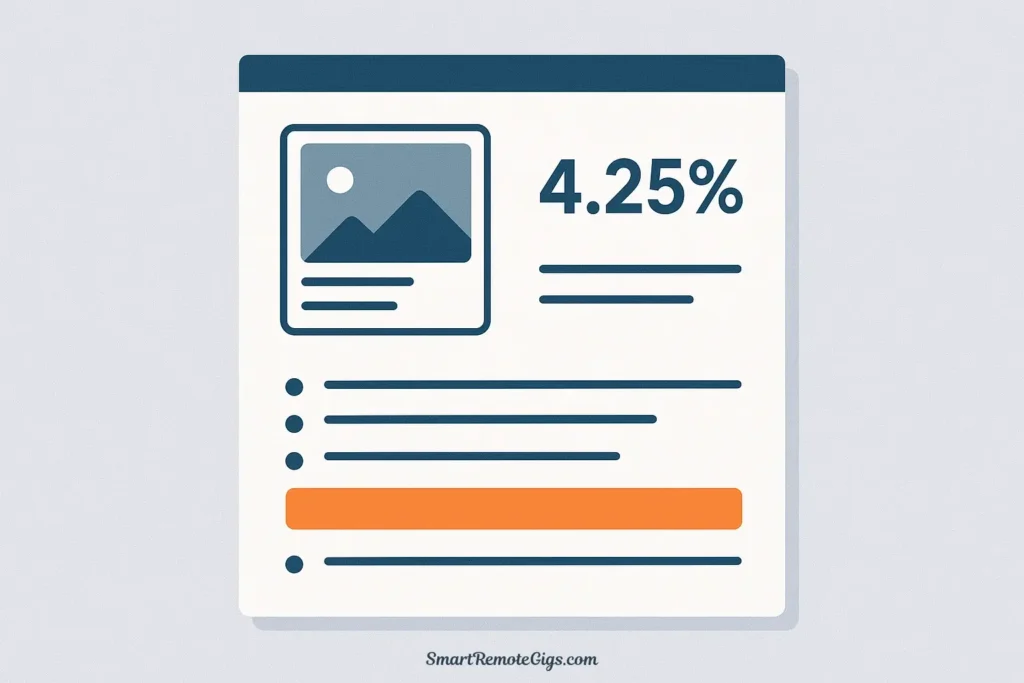
Time Required: 1-2 hours
This project proves you can look beyond creating content to analyze performance and make data-driven improvements—a skill that separates junior coordinators from strategic managers.
Step-by-Step Process:
1. Choose a Real Post to Analyze
Find an actual post from your chosen brand (or a similar brand if yours is fictional) that you can analyze. Screenshot it along with its visible engagement metrics.
2. Gather Available Data
Even without backend access, you can observe:
- Number of likes/reactions
- Number of comments
- Number of shares (if visible)
- View count (for videos)
- Approximate follower count at time of posting
- Time posted
- Post format (photo, video, carousel, story)
3. Calculate Key Metrics
Engagement Rate: (Likes + Comments + Shares) ÷ Followers × 100
Example: A post with 87 likes, 12 comments, and 3 shares on an account with 2,400 followers:
(87 + 12 + 3) ÷ 2,400 × 100 = 4.25% engagement rate
Context: 1-3% is average, 3-6% is good, 6%+ is excellent.
4. Create Your Report
Build a simple 1-page analysis with these sections:
Post Overview:
- Screenshot of the post
- Platform, date posted, time posted
- Basic metrics (likes, comments, shares, reach if available)
Performance Analysis:
- Engagement Rate Calculation: Show your work
- What Worked: 2-3 observations about why this post performed well (or poorly)
- “The carousel format encouraged swipe-throughs, increasing engagement time”
- “The question in the caption prompted 12 comments, higher than their average of 5-6”
- “Posted at 7 AM, catching morning scrollers during their commute”
- What Could Be Improved: 2-3 specific, actionable suggestions
- “The caption could have included a stronger call-to-action”
- “Adding relevant hashtags could have increased discoverability”
- “A more eye-catching cover image might have improved scroll-stopping power”
One Key Recommendation:
Based on your analysis, make one clear, specific recommendation for future posts:
“Recommendation: Based on this post’s strong performance with carousel format, create 2-3 carousel posts per week featuring ‘Top 5’ lists or how-to guides. This format increased engagement by 73% compared to single-image posts and provides more value to followers, encouraging saves and shares.”
Deliverable Format:
A clean, one-page report that feels professional and data-informed. Include the post screenshot, your calculations, and your insights in a scannable format.
Portfolio Power Move: If you want to go above and beyond, create reports for 3-4 posts and identify patterns across them. This shows you can spot trends, not just analyze individual instances.
How to Present Your Portfolio
Now that you have five complete projects, you need to package them professionally. The format matters—a disorganized collection of random files won’t make the impact of a cohesive, well-designed portfolio.
Best Portfolio Formats:
Option 1: Canva Presentation (Recommended for Beginners)
Create a multi-page PDF portfolio using Canva:
- Page 1: Title page with your name, “Social Media Manager Portfolio,” and contact info
- Page 2: Brief introduction (2-3 sentences about you + 1 paragraph about your chosen brand/case study)
- Pages 3-15: One project per section (2-3 pages per project)
- Final Page: Your contact information and call-to-action (“Let’s work together”)
Pros: Free, visually appealing templates, easy to update, shareable as PDF or link
Cons: Can look template-y if you don’t customize significantly
Option 2: Personal Website Portfolio
Create a simple portfolio website using Wix, Squarespace, or even a free Google Site:
- Homepage with brief bio and overview
- Separate page for each project
- Contact page with email and LinkedIn
Pros: Professional, easy to share via link, shows tech comfort
Cons: Takes slightly more time to set up
Option 3: Behance or Notion Portfolio
Upload your projects to Behance (free portfolio platform for creatives) or create a shareable Notion page:
Pros: Behance is industry-recognized; Notion is trendy and shows modern tool usage
Cons: Requires learning a new platform
Option 4: High-Quality PDF
If you prefer simplicity, create one comprehensive PDF document:
- Clean, consistent formatting throughout
- Table of contents with clickable links to each project
- Professional fonts and adequate white space
Pros: Universal format, easy to email, works everywhere
Cons: Can be large file size, less interactive than website
Portfolio Presentation Tips:
Keep It Visual:
Include lots of images—screenshots of your posts as they would appear on platforms, mockups of your graphics, photos of your spreadsheets.
Write Clearly:
Avoid jargon. Explain your thinking in simple, confident language. Hiring managers aren’t looking for perfection—they want to see your thought process.
Show, Don’t Tell:
Rather than saying “I’m creative and organized,” demonstrate it through the quality of your work.
Make It Skimmable:
Use headers, bullet points, and white space. Busy hiring managers may spend only 2-3 minutes on your portfolio initially.
Keep It Updated:
As you complete new projects or gain actual client work, replace weaker portfolio pieces with stronger ones.
Include Context:
For each project, briefly explain the goal, your process, and the outcome or what you learned.
You’re No Longer “Inexperienced”
Congratulations—you’ve just eliminated your biggest job search obstacle. You no longer have a “no experience” problem. You have a professional social media manager portfolio with five distinct projects that demonstrate:
✅ Content creation and copywriting (Mini-Campaign)
✅ Strategic and analytical thinking (Competitive Analysis)
✅ Organization and planning (Content Calendar)
✅ Communication and brand voice (Engagement Playbook)
✅ Data analysis and performance optimization (Performance Report)
These are the exact skills hiring managers look for when evaluating candidates. Your portfolio proves you have them.
What to do next:
- Polish your projects into your chosen portfolio format this week
- Add your portfolio link prominently on your resume (under your contact info or in your summary)
- Reference specific projects in cover letters: “In my portfolio, you’ll see a competitive analysis I conducted for a local coffee shop that mirrors the challenges your brand faces…”
- Share on LinkedIn with a post like: “Excited to share my social media portfolio featuring strategy, analytics, and content creation projects. Open to opportunities in [your niche]!”
- Start applying confidently to smm portfolio for beginners roles, knowing you have concrete evidence of your abilities
The “experience” barrier that kept you from applying has been broken. These portfolio projects are your proof of capability, your conversation starters in interviews, and your ticket to that first role.
You’ve done the work. Now go show hiring managers what you can do.
Ready to start applying? Make sure your overall career strategy is solid by reading our comprehensive guide: How to Become a Remote Social Media Manager (The Complete 2025 Guide).
How to Build a Social Media Manager Portfolio from Scratch
A step-by-step guide detailing five specific projects you can complete to create a professional social media portfolio with no prior client experience. These projects are designed to demonstrate a full range of strategic, creative, and analytical skills.
Total Time: 5 days
Create a 3-Post “Mini-Campaign”

Choose a campaign theme for your selected brand and plan three related posts (e.g., educational, behind-the-scenes, promotional). Use Canva to design consistent visuals and write compelling, platform-specific captions with hashtags. Conclude by documenting the campaign’s goal, target audience, and success metrics.
Conduct a Strategic Competitive Analysis

Identify two direct competitors and analyze their social media presence, including platforms, content strategy, and engagement. Create a 2-page report that includes a comparison table and provides 3-4 key strategic recommendations for your brand based on market gaps and opportunities.
Develop a One-Week Content Calendar

Define 3-4 content pillars for your brand. Build a one-week content calendar in a spreadsheet, detailing the date, platform, post type, topic, and goal for 7-10 posts. Include strategic notes explaining your content mix and rationale to demonstrate planning skills.
Design a Community Engagement Playbook
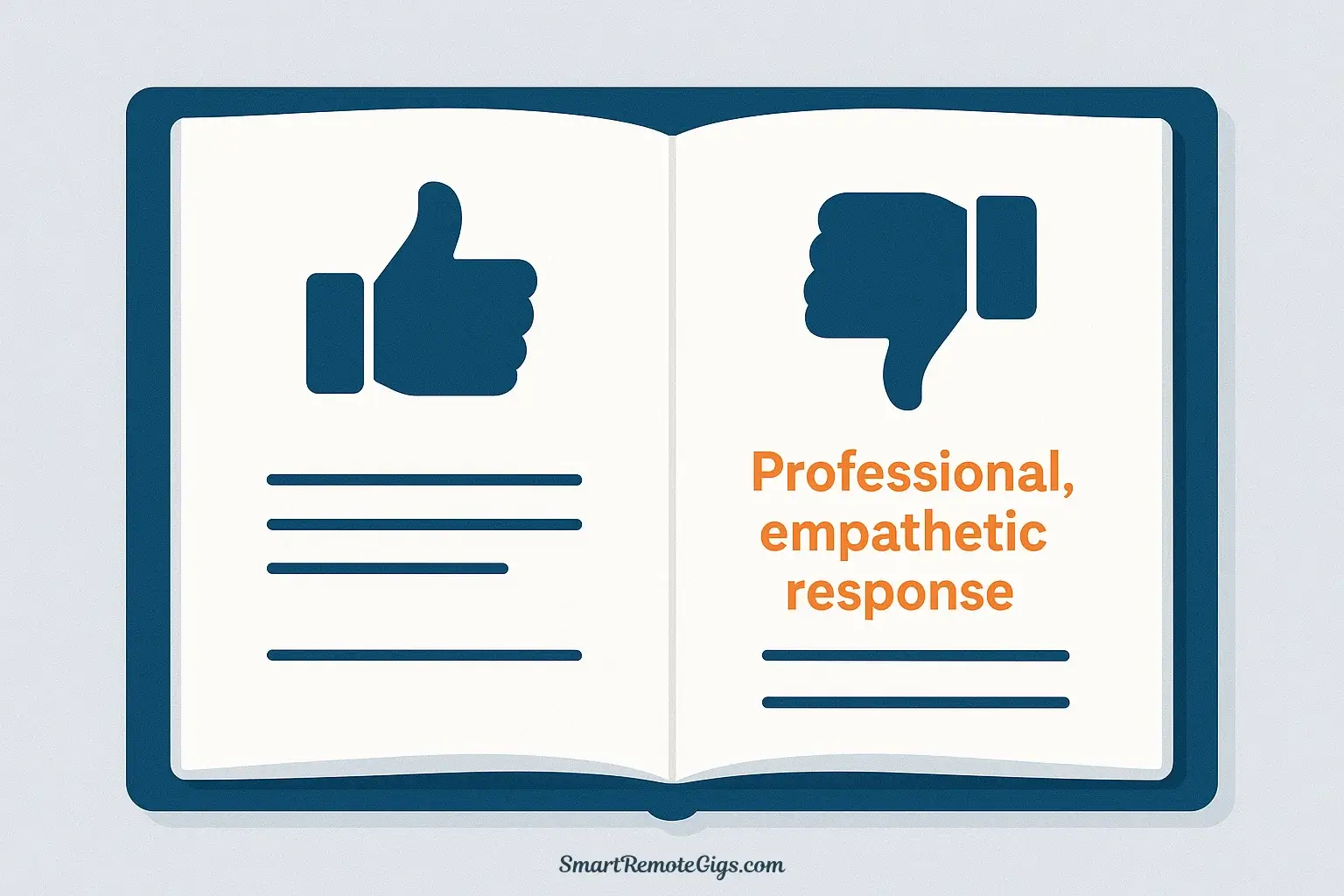
First, define your brand’s voice and tone. Then, draft detailed, on-brand responses for five common scenarios: a positive comment, a negative complaint, a product question, user-generated content, and a troll comment. Format this as an internal guidebook to showcase communication and crisis management skills.
Create a “One-Metric” Performance Report

Select a real post from your chosen brand to analyze. Calculate its engagement rate based on visible metrics (likes, comments, followers). Create a one-page report that includes a screenshot of the post, your analysis of what worked and what could be improved, and one specific, data-driven recommendation for future content.
Tools:
- A selected brand to use as a case study
- Canva (for design and portfolio presentation)
- Spreadsheet software (Google Sheets, Microsoft Excel)
- A method to present the portfolio (PDF, Google Sites, Behance)



